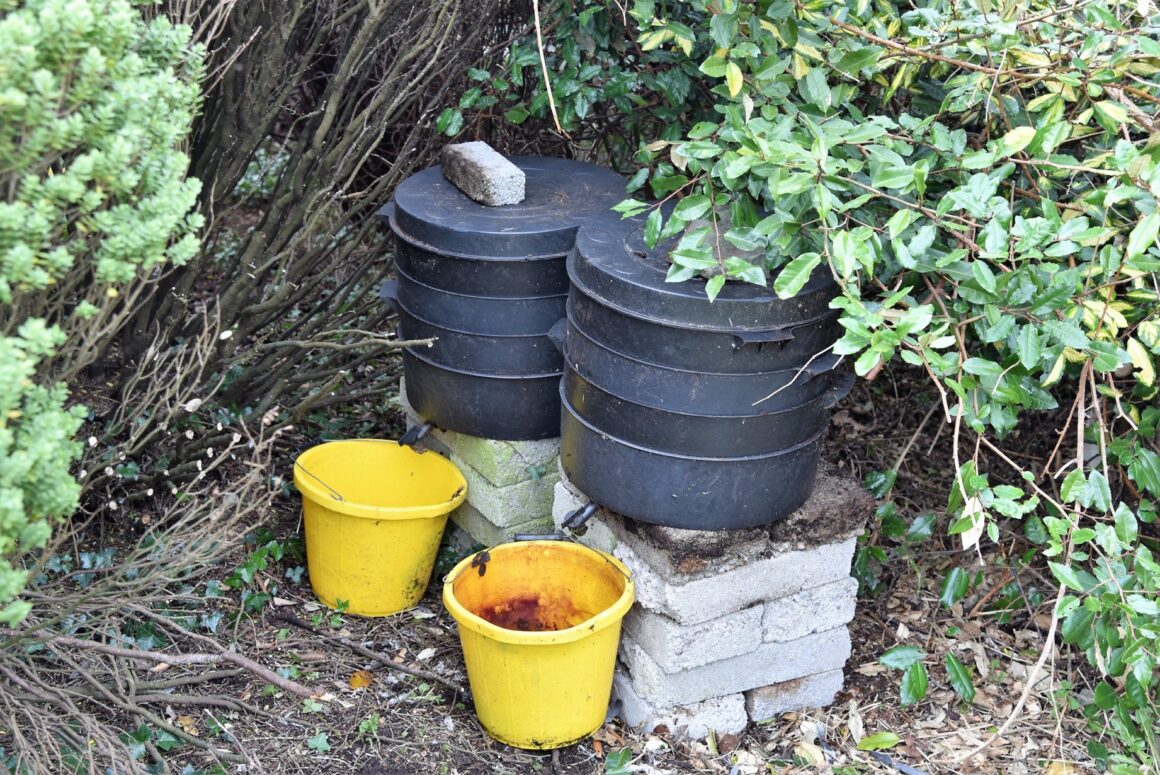Table of Contents Show
What is Bokashi?
The word – Bokashi is Japanese for “organic fermented matter”.
Bokashi is a way of composting materials that cannot go straight into ordinary compost bins.
Do I need a Bokashi bin?
A Bokashi bin is used to ‘compost’ kitchen waste items that cannot be put into the ordinary compost bin that you use for vegetable peelings, paper, cardboard, and other safe and easy-to-compost materials.
Most people work the Bokashi bin system by having two bins the first is the one you are using to put the kitchen waste into currently, and the second bin will be the bin that is full ( you previously filled this by using it for kitchen waste and added the bran mix as you did so) and that now has to stand for at least two weeks before the contents can be dug into the garden or added to the compost heap.
The Bokashi System differs from the normal ‘composting’ techniques in that food that would normally have to be thrown out and that is not suitable for composting can be put into the Bokashi bin to begin the process of being turned into something that is eventually used as compost in the garden.
The Bokashi technique works by adding a specially formulated type of bran which has molasses and microorganisms added to it to the Bokashi bin when each batch of waste food is added to it.
At the end of two weeks or so you put the Bokashi bin aside to stand and begin its next stage some people call this the resting period.
While the first bin is ‘in its resting stage’ you begin to collect and put your waste from the kitchen into the clean second bin.
At the end of two weeks (resting time), the food in the first Bokashi is ready to be dug into your garden or vegetable plot to rot down further.
Once you have cleaned out the first bokashi bin you will then begin to use this first bin to once again fill with kitchen waste while bin number two goes into its resting stage at the end of which its contents can be composted or dug in.
Further information about the Bokashi system…
Using the Bokashi System for kitchen waste reduces the amount of waste going to landfill sites.
Some people do not like the smell of the contents in the Bokashi bin when they lift the lid of the bin – they usually describe it as a ‘pickled smell’.
You need to count on the cost of purchasing the special ‘bran mix’ that you added to the bin when deciding if the system is right for you. So the costs are… two bins plus an ongoing cost for a supply of ‘activated bran’.
You need somewhere to ‘use the contents’- that is somewhere to dig the contents of the bin into at the end of the two-week resting time.
How to Use a Bokashi Bucket
What Kitchen Waste Can Go Into a Bokashi Bin?
A Bokashi Bin will take most kitchen wastes including meat, small bones, dairy products, and cooked food which could not normally be composted. Bokashi buckets are airtight so that they won’t smell or attract flies.
The Bokashi system does not actually compost the food it infuses the waste with effective microbes Ems.
Ems are a mixture of bacteria and fungi which are mixed with the other ingredients which form the base of the product – usually bran and molasses, but sometimes this is rice hulls or sawdust.
This base product is infused with effective microorganisms or EM.
EM’s are natural lactic acid bacteria, yeast, and bacteria that act as a microbe community on the kitchen scraps, fermenting, and accelerating the breakdown of organic matter).
This ‘bran‘ mix is scattered over the food waste in the Bokashi bin and they ferment it.
Once the fermentation is complete, and the resting time is over… the compost can be buried or placed in a compost heap to complete its decomposition.
The end result is rich compost, ready for the garden.
Do You Need a Bokashi Bin… who might find a Bokashi system useful…
I came to the conclusion that most of my kitchen waste is suitable to go straight into the compost bin and as we rarely throw away cooked food etc. the Bokashi was an unnecessary purchase for us.
The reasons you should consider using a Bokashi are – if you have a lot of kitchen waste that is not suitable go straight to composting i.e mainly cooked foods.
I believe it would be beneficial if local authorities encouraged the use of the Bokashi system commercially for example in restaurants and school kitchens etc.

